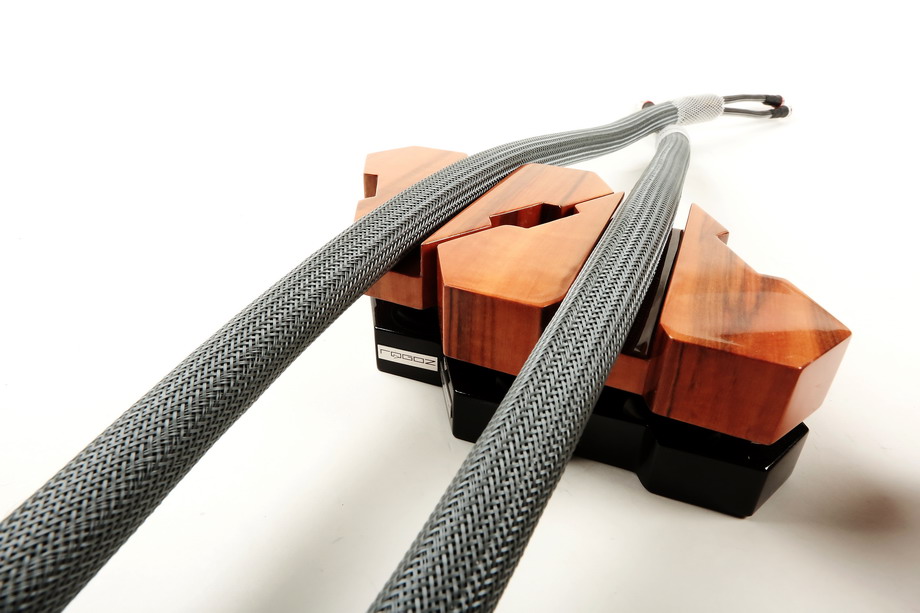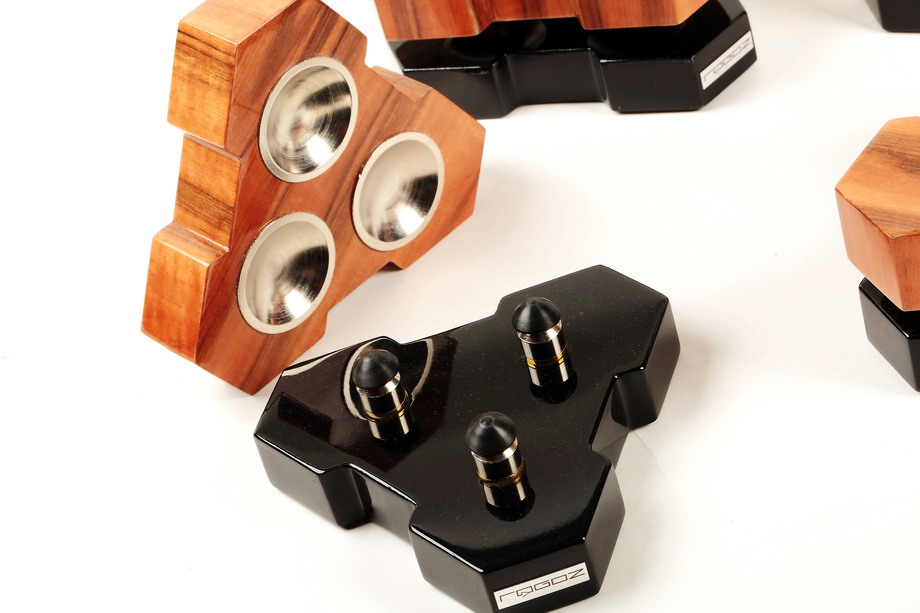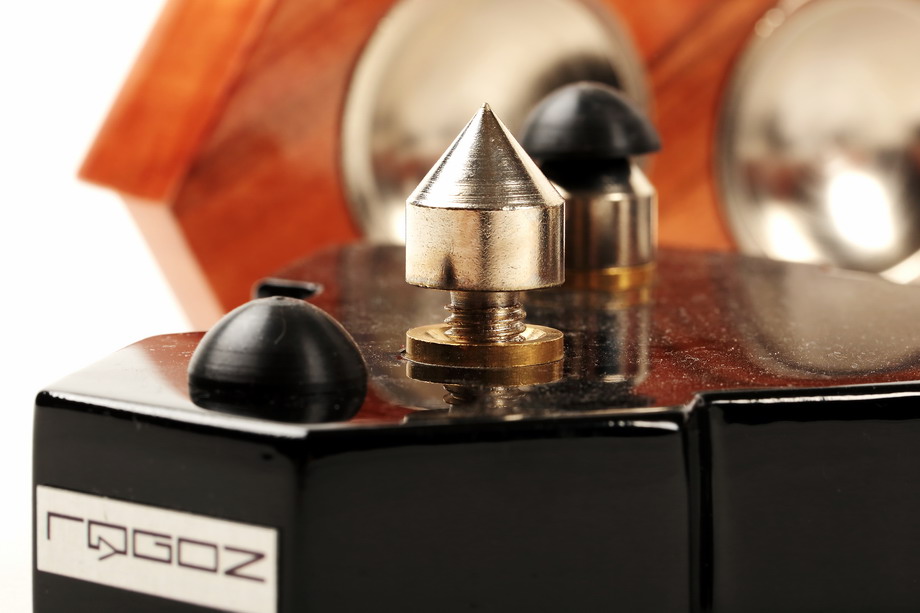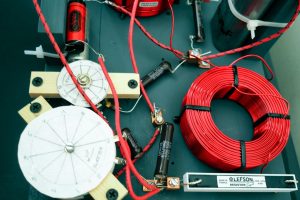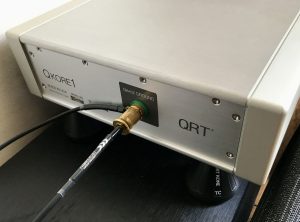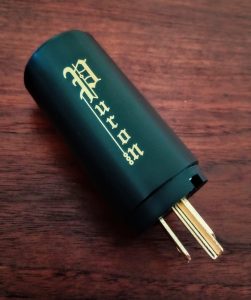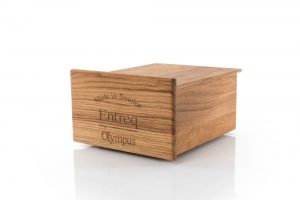One of the most frequent reactions of people who have never visited me before and who have nothing to do with audio, is their surprise at the sight of my speaker cables trailing on the floor. In my reference system, I have been using the Tara Labs Omega Onyx cables for many years. They are very thick cables, indeed—two runs of cable, each thicker than my both thumbs. So, I have got used to people comparing them to garden hoses, or most often to welding cables designed for an industrial welder.
However, if someone has some knowledge of signal transfer and of advanced methods used in the audio industry that serve to improve it, they will react differently when they see cables as thick as a man's leg. In that case, comparing them with welding cables will prove inadequate. Welding cables have large diameters because of high currents that flow through them—cables with a large cross-sectional area have lower resistance and the risk of burning is minimized.
If we cut through a speaker cable, even as thick as the Tara Labs, we would see that most of the cross-sectional area is filled with dielectrics and air. Conductors comprise just a part of it. The large diameter of (mostly) speaker and power cables does not result from the need to lower their impedance, but from requirements connected with their mechanical design—the right geometry and vibration damping. It seems that the latter is becoming more and more important nowadays.
Experiments carried out by leading cable manufacturers prove that reducing microphonics (a term taken from tube technology) improves sound quality. And how to reduce cable microphonics? By using vibration-damping materials and the right geometry, which usually results in increasing the cable diameter considerably, while the amount of metal used for production remains the same. This is how "garden hoses" such as the Tara Labs or the Polish KBL Sound cables (tested in the same issue of High Fidelity) are born.
Stabilizers
Experiments that have been carried out for years by different "freaks", both users and manufacturers, have shown that vibration control can be increased even further by using cable stabilizers (insulators) which decouple cables from the ground (which vibrates because speakers vibrate) and at the same time reduce the amount of volume between the cable and the ground. So, cable stabilizers are offered by manufacturers such as Acoustic Revive, Harmonix, Siltech, Shunyata Research and others. This group has a new member now—the Polish company Rogoz Audio.
What it offers is different from any other such product that I know of, and the difference is most noticeable in the case of my own Acoustic Revive RCI-3H cable insulators. The Japanese insulators have the form of a hickory wooden block with a hollowed-out interior filled with the same crystals and powder that can be found in other platforms produced by this manufacturer. Each insulator is closed from the bottom with a flat wooden board made of another type of wood. The whole product works perfectly well, so the insulators can be found in audio systems used by some members of the Krakow Sonic Society (more about the Acoustic Revive method HERE).
Mr. Rogoz, the owner of the Rogoz Audio company, takes an approach similar to the attitude of the British Vertexaq company. The companies suggest using a classic anti-vibration platform of smaller dimensions under cables. When it comes to the Vertexaq company, its product has the form of a metal box permanently integrated with the cable—although it is not visible, there is a platform inside (like in the figure; more information on the Vertexaq company approach, which is probably best documented in the whole audio industry, can be found HERE).
As regards the 3T1/BBS, it is an additional (external) element consisting of two shelves, decoupled by a decoupling system: a spike, an intermediary element and a spherical bearing (three per platform), called the BBS—Balancing Board System (patent pending). The top shelf with a cut-out for the cable is independent of the bottom shelf. The whole product is perfectly made and looks very well. The shelves are also quite large, so we can see what we pay for. The stabilizers can be used both under speaker and power cables, as well as under interconnects. They can stand on the floor or on a bookshelf, behind the devices, so that cables do not come into contact with the bookshelf.
A few simple words with…
JANUSZ ROGOZ
Owner, constructor
The aim of using the platform is, on the one hand, to protect cables from microphonics by separating them from all solid surfaces that are mechanical acoustic bridges (i.e. any surfaces which comes into contact with a listening room in such a way that vibrations generated by speakers may be transferred onto them via vibrating movement by other solids). On the other hand, the platform is used to separate cables from large flat surfaces and to protect them from the action of an electrostatic field of high intensity, which is almost always created near floors, carpets or floor linings, for example.
The platform consists of two sandwich-type shelves mechanically separated from each other at three points by the BBS system. The top shelf of the platform is covered with Indian apple wood and is characterized by low static electricity, while the bottom shelf is covered with polymer varnish collecting low electric charges. As a result, a uniform electric field is created around the top shelf of the platform. The Balancing Board System (BBS) has kinematic and dynamic properties that make it possible for the isolated masses "flow" to the sides of the system axis, simultaneously providing point support. The shape of the shelves and their layered structure, together with the BBS, make it possible to eliminate not only vibrations coming from the ground, but also standing waves, cumulating in the platform itself.
TEST METHODOLOGY
The anti-vibration 3T1/BBS stabilizers were tested together with the Acoustic Revive RCI-3H insulators. However, the comparison was mostly related to the stabilizers and a lack of them (cable on the floor). I used two speaker cables for the test: the KBL Sound Himalaya and the Mogami NIII-2804. The test was a repeated A/B comparison, with known A and B.
SOUND
Recordings used in the test (a selection):
- Arimasa Yuki & Hisatsugu Suzuki, Duet, Una Mas Jazz UNACD-10-01, XRCD24 (2010).
- David Crosby, Croz, Blue Castle Records BCR1142-1, CD (2014); review HERE.
- Jean-Michel Jarre, Oxygene 10, Disques Dreyfus/Epic 664715 2, Maxi SP CD (1997).
- P.U.R. Collective, Nichi Nichi Kore Ko'nichi, Fortune 0056 (006), CD (2015); review HERE.
- Pat Metheny, What's It All About, Nonesuch Records/Warner Music Japan WPCR-14176, CD (2011); review HERE.
- Paul McCartney, Kisses on the Bottom, Universal Music/Universal Music LLC [Japan] UCCO-3038, SHM-CD (2012).
- The Beatles, Abbey Road, Apple/USM Japan UICY76978, SHM-CD (1969/2014).
- The Modern Jazz Quartet, The Sheriff, Atlantic Records/Warner Music Japan WPCR-25129, "Atlantic 60th", CD (1964/2006).
- The Rolling Stones, Exile on Main St., Atlantic/Universal Music Company (Japan) UICY-40001, Platinum SHM-CD (1972/2013).
If we change a component of an audio system and nothing changes in sound quality, there may be a few reasons for this. Firstly, the new component may sound exactly the same as the replaced one. Secondly, errors in the system might mask the changes that have been made. Thirdly, we may simply not be able to hear the changes. I have already written about it once, but there is nothing wrong in repeating it. In the first case, we can modify the system by adding some component which usually serves to protect the system from interference or/and to damp vibrations—and if the introduction of this component does not change anything about the sound, then see above.
As far as my experience is concerned, there is usually a combination of two or even three problems, each being equally important. However, assuming that the people who deal with audio can hear things a bit better than the rest of the society—thanks to inborn qualities or training (the sense of hearing can be trained, just like any other organ)—we are left with "a lack of changes" and "masking". And again—from what I see, it is usually all about the latter. However, the very group of music lovers-audiophiles is the loudest when it comes to proving the thesis that there are cheats, quacks and idiots working in the audio industry.
I suggest that they all test Mr. Rogoz's stabilizers. It is enough for one to assume that what I write is true (even for a moment—let it be such a crazy experiment) and then it will be possible for them to verify their system and/or their sense of hearing. It is due to the fact that if we place the 3T1/BBS stabilizers under cables and hear changes in sound, it will mean that both the system and the sense of hearing are OK. If there is no change, then there is something wrong with either the former or the latter.
It is because I assume that changes in sound should be heard immediately, without lengthy listening sessions requiring a lot of attention from the listener. Sometimes it takes time to define, interpret and evaluate these changes, but not to hear that they exist. If nothing changes after a change/introduction of a component, then see above.
The tested stabilizers change sound so clearly and unambiguously that one will not need much time to evaluate their influence on the system. Both the thick KBL Sound cables and the much thinner Melodika Brown Sugar BSC2450 cables placed on the stabilizers modified sound in a different way than without them, but in both cases the modifications were very similar.
The stabilizers make sound become deeper and more gentle. I think that it is about much better reproduction of small signals responsible for the attack and sound finish, as well as about the acoustic surroundings closest to the instruments. It can be heard as an addition of perspective and life to the sound. The former results from better saturation with little details. The sound seems deeper and a bit heavier. However, the effect of weighing down does not result from adding bass, but from greater naturalness of sound. We obtain very similar effects when a device is characterized by low distortion.
It is also very interesting how the shaping of the attack changes. Without the stabilizers, the sound is a little drier (this is less marked "personal" acoustics), and it is also less clear and seems softer. Normally it would be an advantage, as natural sound is not contoured and we do not pay attention to the attack—it is there and that's it. However, here it is related to something a little different. Better defined sound with the stabilizers is more natural and it is not contoured at all. I would say that it is less fuzzy.
Conclusions
I do not know how many of those who doubt (of course, everyone has the right to doubt and skepticism is a good quality) the sense of using such products have actually carried out an experiment in which they gave up their disbelief. I assume there have been a few brave ones and that some of them have heard changes similar to those that I describe. Those who have not heard these changes can easily explain such a result of the experiment—it has all been fabricated (since a lack of changes is not a failure—a lack of information is also information).
And this is good—everyone should think in their own way. As regards those who have not had an occasion or the will to listen to the influence of the 3T1/BBS stabilizers on sound, I will only tell them that the influence is very positive and that the stabilizers modify sound in such a way that we get closer to a live event, studio or concert. Not all anti-vibration stabilizers that I or my colleagues from the Krakow Sonic Society have listened to work in this way. Mr. Rogoz's product is very expensive and makes sense in top-of-the-range systems. However, it will help to extract even more music from a well-set system. As regards bad systems, it will prove about as useful as a chocolate teapot.
DESIGN
The 3T1/BBS platform consists of two shelves (30 and 25 mm thick) constructed as a "sandwich". These shelves are separated from each other using the BBS. The top shelf is made of MDF and HDF boards, as well as tineo (Indian apple) wood veneer with high-gloss varnish. The bottom shelf consists of two layers—MDF and HDF boards, coated with high-gloss black varnish.
BBS is a system which makes it possible for the shelves to move freely with respect to each other into every direction, keeping them decoupled at the same time. It is a set of three elements: a steel spike on which a carbon polymer cap is placed and a polished steel bearing in the top shelf.
Each platform comes in a separate box and the dimensions of the platform are the following:
- total height—70 mm,
- total width—147 mm,
- total depth—147 mm,
- top shelf—147 x 130 x 30 mm,
- bottom shelf—147 x 130 x 25 mm.
BBS - Balancing Board System
The BBS consists of a threaded, height-adjustable spike made of a high carbon steel alloy on top of which two other elements are placed—each with an inner bearing. The intermediary element is made of a carbon polymer and supports another element—a steel bearing inserted into the shelf. Point contact between the steel spike and the carbon intermediary element prevents movement of either element relative to its axis, but it allows pendular motion. As regards contact between the intermediary element and the bearing inserted into the shelf, it allows restricted rolling motion and sliding motion. So, the advantages of spike point support (the contact area has been minimized and kinetic energy turns into heat) have been combined with the effect of vibration damping resulting from sliding friction and rolling resistance. Rogoz Audio has a patent (UPRP P.404137) pending on the BBS.
Rogoz Audio 3T1/BBS
Price: 950 PLN/unit
ROGOZ AUDIO
Phone: 504 080 690
MADE IN POLAND
Text: Wojciech Pacuła
Photos: Wojciech Pacuła
Translation: Ewa Muszczynko




